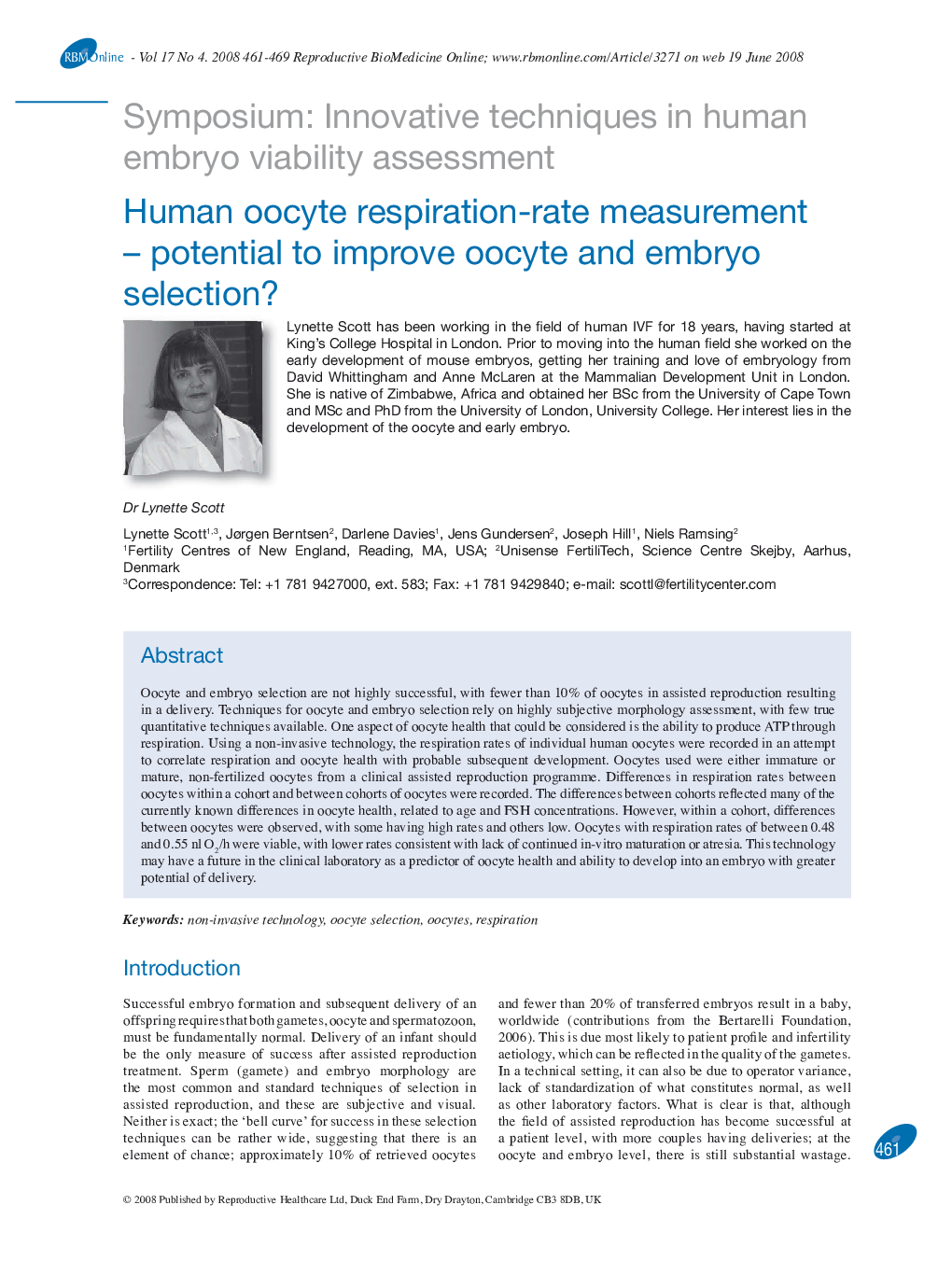| Article ID | Journal | Published Year | Pages | File Type |
|---|---|---|---|---|
| 3972375 | Reproductive BioMedicine Online | 2008 | 9 Pages |
Oocyte and embryo selection are not highly successful, with fewer than 10% of oocytes in assisted reproduction resulting in a delivery. Techniques for oocyte and embryo selection rely on highly subjective morphology assessment, with few true quantitative techniques available. One aspect of oocyte health that could be considered is the ability to produce ATP through respiration. Using a non-invasive technology, the respiration rates of individual human oocytes were recorded in an attempt to correlate respiration and oocyte health with probable subsequent development. Oocytes used were either immature or mature, non-fertilized oocytes from a clinical assisted reproduction programme. Differences in respiration rates between oocytes within a cohort and between cohorts of oocytes were recorded. The differences between cohorts reflected many of the currently known differences in oocyte health, related to age and FSH concentrations. However, within a cohort, differences between oocytes were observed, with some having high rates and others low. Oocytes with respiration rates of between 0.48 and 0.55 nl O2/h were viable, with lower rates consistent with lack of continued in-vitro maturation or atresia. This technology may have a future in the clinical laboratory as a predictor of oocyte health and ability to develop into an embryo with greater potential of delivery.
